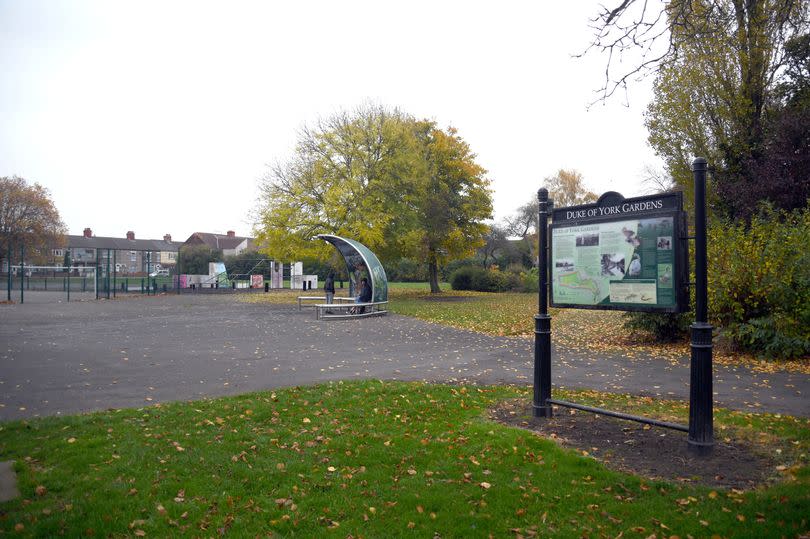Higher rates of obesity and food insecurity in northern Lincolnshire where 'far too many are old before their time'

Higher rates of obesity, food insecurity and homelessness have been highlighted in an annual public health report.
Northern Lincolnshire's director of public health has set out ambitions to improve health and life expectancy in the area. There is support to make automatic free school meals registration for those entitled.
The challenges faced are also laid out, though, with more than one in three people obese. Diane Lee is Northern Lincolnshire's director of public health and this is her first annual report in the role.
Read More:
It was passed by North East Lincolnshire Council's health and wellbeing board on Monday, July 8. In the North East Lincolnshire-only pre-amble, the council notes life expectancy and healthy life expectancy, years lived in good health, "remain stubbornly low" and "far too many residents are old before their time".
Also discussed at the council's health and wellbeing board was the Humber and North Yorkshire Health Care Partnership's strategy. This includes the ambition to increase healthy life expectancy in the region by five years by 2035.
Challenges faced - obesity, lower incomes, homelessness
The public health report has eight areas of focus, which it is stated influence up to 80 per cent of our positive health and wellbeing. These relate to finances, employment, education, transport, housing, the food we eat, our natural surroundings, and family, friends and communities.
On social isolation challenges, 15,858 households across northern Lincolnshire consist of a person with a disability living alone. In East Marsh and Port in Grimsby, more than one in four households are made up of a person with a disability living alone.
Another challenge is obesity and people's diets. North Lincolnshire has a 37.1 per cent obesity rate, according to Office for Public Health Improvement & Disparities (OHID) data. North East Lincolnshire at 34.7 per cent is still well above the England-wide 25.9 per cent average.
There is a higher prevalence of fast food outlets. "As of December 2023, there were 196 fast food outlets in North Lincolnshire, and 227 in North East Lincolnshire. This gives an overall rate of 1.13 per 1,000 people in North Lincolnshire, and 1.42 per 1,000 in North East Lincolnshire, both of which are higher than the England average of 1.05 per 1,000."
There are greater rates within more deprived areas. Town Ward in Scunthorpe, had the highest concentration of fast food outlets per 1,000 people, with a rate of 4.9 for its 47 outlets.
The impact of limited money is also highlighted, including food insecurity, where people do not "have access at all times to enough food that is both varied and culturally appropriate to sustain an active and healthy lifestyle". North Lincolnshire has the lower figure here, 26.2 per cent, while 43.6 per cent of North East Lincolnshire's population lived with food insecurity in 2021.

Homelessness, air pollution and road collisions are other factors the report features, with notable statistics cited. With a rate of 25.6 per 1,000, North East Lincolnshire has the second highest rate of homeless families in the Yorkshire and Humber and significantly higher than the England average, based on 2021/22 data.
The report states an indicator of mortality attributable to air pollution puts 5.6 per cent of deaths in North East Lincolnshire and 4.8 per cent in North Lincolnshire to particulate air pollution. Northern Lincolnshire also had in 2018-20 double the rate of children killed or seriously injured on roads, compared to the England-wide average.
Ambitions and achievements since last year
There are a raft of recommendations, labelled 'ambitions', with a 12 month timeline. This includes "ensure those families who are eligible to access free school meals are automatically enrolled, meaning no family misses out".
An opt-out system was called for by North Lincolnshire Labour councillors earlier this year. The Conservative council leader, Cllr Rob Waltham, rejected it as "patronising" and shared his own experience from a one-parent family eligible for free school meals.
Free school meal eligibility is higher locally, according to Department for Education data, with 28.3 per cent eligibility in North Lincolnshire in 2022/23 academic year, around 6,900 pupils. Of those pupils, 5,539 took up the free schools meals option. North East Lincolnshire had a higher eligibility rate, 30.8 per cent.
On social isolation, a stated ambition is to "continue to support community spaces and Voluntary Community Sector (VCS) enabled networks, across North Lincolnshire, to counter isolation". There is a goal to work with schools and other key agencies "to enhance key prevention work for children and young people". This includes improving oral health. Nationally, the main cause for hospital admissions among children is tooth decay.
Championing active travel is another ambition - to reduce car journeys, and in turn, improve air quality. ONS Census data suggests 14.2 per cent of people in North East Lincolnshire walk or cycle to work, with East and West Marsh top with almost three in ten people doing so.

The annual health report reflects on progress made since last year and developments that will contribute to ambitions. On travel, Levelling Up Fund-supported cycle paths in Scunthorpe are mentioned.
Smoke-free playgrounds and schools have been implemented. There has also been use of regional health inequalities funding for a Scunthorpe North urban centre to improve understanding of diverse communities' needs and "co-produce an offer which will improve the health and wellbeing of this population".

 Yahoo News
Yahoo News 
